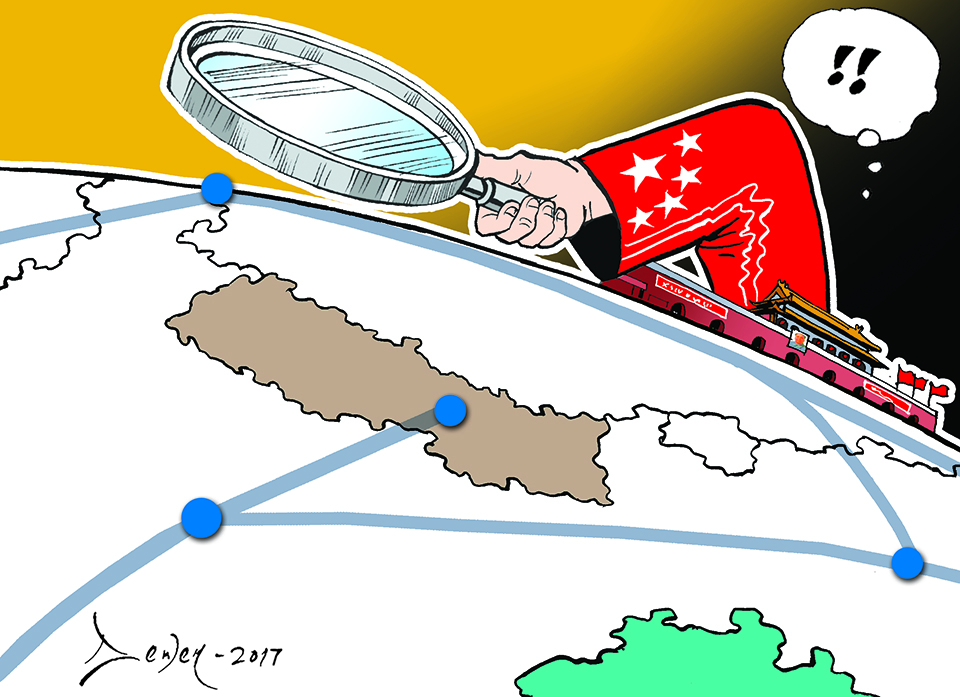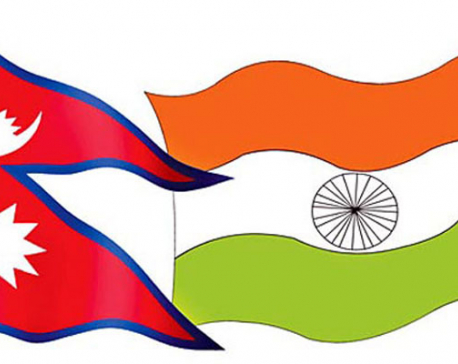
OR
BRI and Nepal

More from Author
Both Nepal and China look excited about BRI projects. But Nepal needs to carefully assess experiences of other countries before moving forward.
China’s Belt and Road Initiative (BRI) has made headlines in national and international newspapers for quite some time. It has become the topic of discussion in both developing and developed countries alike. For instance, The Telegraph in India broke the news in 2015 that China is considering building a tunnel that links railway between Beijing and Kathmandu and that such railway will pass through under Mount Everest. Although the western countries are suspicious of BRI, it has provided impetus for railway connectivity for many countries. Thanks to the political instability and sluggish bureaucracy, railway has remained a far-fetched dream for Nepal so far.
The landslide victory of left-alliance led by CPN-UML chairman K P Oli and Maoist supremo Pushpa Kamal Dahal has once again raised our aspiration for railways and Chinese investment. A recent surprise visit of Oli, who is also seen as Prime Minister in waiting, to only operational border between Nepal and China at Rasuwagahdi, and his inspection of trade point there has raised the optimism that his government will seek larger connectivity projects from China in the days to come. China, on the other hand, has been looking for stable and prosperous neighbors to reinforce its own economic growth. Both Nepal and China look excited about BRI projects. But Nepal needs to carefully assess experiences of other countries in BRI and move ahead accordingly.
Differing views
Belt and Road Initiative, which was also called One Belt and One Road (OBOR), is perceived differently by different people. Some call it a ‘development strategy,’ ‘mercantile endeavor,’ or China’s strategic gambit aimed at establishing Chinese hegemony for a China-centric world order. Others see it as a move to reestablish Eurasia as the largest economic market for China and shift the world order from dollar-based global system to Yuan-based economy. This indicates that BRI will have greater implications in the days to come and will remain as much contentious, in Nepal as well.
It is almost clear that Chinese development cooperation will be provided through BRI channels. BRI is an umbrella concept which has ambitious plan for connectivity between the Asian, European and African continents. President Xi Jingping declared to materialize this project with announcement of ‘Vision and Action Plan on the Silk Road and 21st Century Maritime Road’ in March 2015.
The BRI action plan and Chinese investment in African and Asian countries show China considers infrastructure as the bedrock for development. Investment in infrastructure has greater value in developing countries than the social investment that western world has prioritized till date. It is predicted that BRI will mobilize up to one trillion dollars in the next few years. China has pledged to invest US$57 billion in Pakistan. Why Nepal has failed to attract such investment is mysterious.
According to the action plan, Asian Infrastructure Investment Bank (AIIB), Silk Road Fund and China’s state-owned companies will finance BRI projects. Nepal is also a founding member of AIIB, which means Nepal also needs to fulfill the criteria and interest of Chinese private companies. In this context, Investment Board of Nepal (IBN) has also prioritized attracting foreign investment in hydropower, ports and railway connectivity projects.
Nepal at crossroads
Although Nepal agreed to join BRI in 2014, it took almost three years for us to sign BRI Memorandum of Understanding (MoU) with China. Some scholars attribute this delay and reluctance to Indian pressure. India was not happy to see Nepal become BRI member. India’s response to BRI lends credence to this interpretation.
When in March, 2017, China convened BRI international forum only 65 countries signed BRI MoU. Japan and India, the closest allies of the US, have stayed away. Japan and India want to resist Chinese influence in Asia. In the days to come, it will be challenging for Nepal to convince India that Nepal becoming BRI member does not, in any way, create a threat to India. Oli, whom India understands as pro-China and anti-India leader especially after inhumane blockage of 2015, will have to struggle to take India into confidence.
Although the first BRI flagship project lies in Gawadar of Balochistan province of Pakistan under China- Pakistan Economic Corridor, China considers Nepal as gateway to enter South Asia. Some Pakistani scholars argue Pakistan will be able to reap massive economic benefits from CPEC, others see it as China’s ambition to influence the whole of South Asia.
Recently, Voice of America—international news source funded by America—highlighted that BRI projects in Nepal, Myanmar and Pakistan have suffered a huge setback. It mentioned that decision of Nepal government to cancel Budhi-Gandaki contract with Chinese company was due to lack of transparency while awarding the project. Similarly, South China Morning Post reported that cancellation of the award was due to Nepal being at strategic position between China and India.
Are we ready?
Experience with Marshall Plan—the American initiative to aid Western Europe to help rebuild Western European economies after the World War II—shows that development aids come with strings attached. So will it be with BRI. Some even describe BRI as Chinese version of Marshall Plan.
Inevitably, Chinese investment will come with its own set of conditions—may be high-interest payments, need to use Chinese labor, goods and technology etc. Some Pakistani scholars have claimed that though Pakistan is close ally of China, some terms and conditions set by Chinese companies undermine Pakistan’s national interests. Chinese companies are also blamed to be the slowest working companies. Is Nepal ready for high-interest payment for low return?
Western scholars have warned that there are domestic and geopolitical interests behind BRI. They consider it the outcome of China’s slow economic growth, regional development of southern provinces of China, and Chinese desire to rise as world’s superpower.
The analysts also believe inclusion of President Xi’s name in Communist Party of China’s action guidelines reflects Xi’s political ambition. In this situation, Nepal needs to lay credible grounds for BRI projects and speed up all requirements. Experience from other countries shows BRI works best only when recipient states can efficiently mobilize their resources. Nepal needs to tread on BRI ground carefully.
The author is M Phil graduate in Development Studies from Kathmandu University
You May Like This

Tread with caution
During its formation the government of the day did not bother to make Nepal’s EPG inclusive ... Read More...

Caution for media regulators
With spread of disinformation online, regulations to police some kinds of speech may seem like a good idea but in... Read More...

Caffeine caution
All over the world, March sees various women-related movements but not many know that this month is also the Caffeine... Read More...
Just In
- KMC to organize a month-long skill fair from May 1
- Birgunj Metropolis collects over Rs 360 million in revenue
- NEPSE plunges below 2,000 points after one and a half months; daily turnover declines to Rs 2.10 billion
- AI Index Report-2024: AI still behind humans on complex tasks like competition-level mathematics
- Daiji-Jogbudha road construction at snail’s pace
- Govt fails to adopt podway technology despite its potential in Nepal
- Jhulaghat border crossing in Baitadi to remain closed from this evening
- Universities will be free from partisan interests: Education Minister



















Leave A Comment